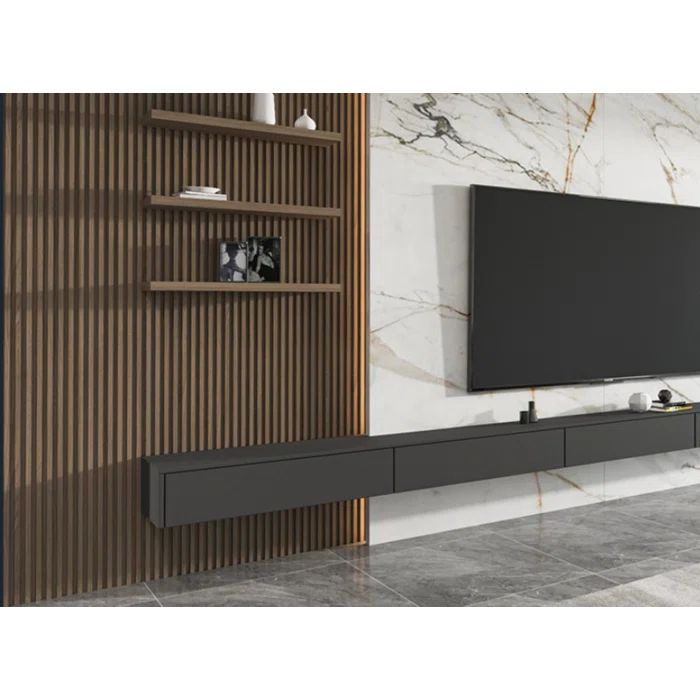When it comes to creating a quiet, serene environment, choosing the right materials for soundproofing is crucial. One of the most effective ways to achieve superior soundproofing is through the use of wood panels. This guide explores the best woods available for this purpose, shedding light on why they excel in noise reduction and how they enhance both functionality and aesthetics. Whether you’re a homeowner looking to create a peaceful space or a professional working on a new project, understanding the best woods can make all the difference.
1. Why Wood Panels Are Excellent for Soundproofing
Wood is a natural sound insulator due to its unique properties. Unlike other materials, wood has an inherent ability to absorb sound waves, preventing them from bouncing back into the room. Here’s why wood panels are an excellent choice:
- Natural Sound Absorption: Wood’s porous structure helps in absorbing and breaking down sound waves.
- Durability: High-quality woods can maintain their soundproofing capabilities for years without losing effectiveness.
- Aesthetic Appeal: Wood panels add warmth and sophistication, making them a popular choice for both residential and commercial spaces.
2. Best Woods for Soundproofing
When looking for the best woods for soundproofing, it’s essential to consider density, thickness, and structural properties. Below, we dive into the top choices:
a. Oak
Oak is widely regarded as one of the best woods for soundproofing due to its density and strength.
- Density: Oak is heavy and dense, which makes it effective at blocking sound transmission.
- Aesthetic Versatility: Its rich texture and classic look blend seamlessly into various interior styles.
- Durability: It resists wear and tear, ensuring long-lasting performance.
Applications: Oak panels are ideal for home offices, music studios, and living spaces where sound insulation is necessary.
b. Walnut
Walnut stands out as another top contender in soundproofing.
- Acoustic Performance: Its dense structure significantly dampens sound vibrations.
- Warm Tones: Adds a touch of luxury and warmth to any room.
- Sustainability: Often harvested responsibly, making it an eco-friendly option.
Applications: Commonly used in luxury home theaters and high-end meeting rooms.
c. Pine
Pine is a more budget-friendly option while still offering soundproofing benefits.
- Affordability: An economical choice that doesn’t compromise too much on performance.
- Lightweight Structure: While it’s less dense than oak or walnut, its natural fiber arrangement helps reduce noise.
- Customizability: Easy to paint or stain, allowing for aesthetic customization.
Applications: Suitable for residential areas such as bedrooms or small offices.
d. Mahogany
Mahogany is known for its superior soundproofing and visual appeal.
- High Density: This wood is both hard and dense, making it one of the best woods for blocking sound.
- Elegant Appearance: Its deep, rich color adds sophistication.
- Resilience: Resistant to shrinking and warping, maintaining its effectiveness over time.
Applications: Frequently used in recording studios and executive office spaces.
3. Key Factors to Consider When Choosing Wood for Soundproofing
To maximize the soundproofing benefits, it’s crucial to pay attention to specific factors:
- Density and Thickness: The denser and thicker the wood, the better it will block sound.
- Installation Techniques: Proper installation can enhance the soundproofing capabilities of even moderately dense woods.
- Layering: Using multiple layers of wood panels can amplify sound insulation.
Pro Tip: Combine wood panels with other soundproofing materials like foam or cork for superior results.
4. Visual Overview: Benefits of the Best Woods for Soundproofing
To summarize the benefits, here is a helpful table comparing the most commonly used woods for soundproofing:
| Wood Type | Density Level | Best For | Cost Range |
|---|---|---|---|
| Oak | High | Home offices, music rooms | $$$ |
| Walnut | High | Theaters, meeting rooms | $$$$ |
| Pine | Medium | Bedrooms, small offices | $$ |
| Mahogany | High | Studios, executive spaces | $$$$ |
5. Additional Tips for Enhanced Soundproofing
- Seal Gaps and Cracks: Even the best wood panels can’t perform well if there are gaps or cracks in the walls or around doors and windows.
- Double Layering: Install double layers of wood panels to create a thicker barrier.
- Use Acoustic Seals: These seals can be placed along edges to further enhance soundproofing.
6. FAQs on Choosing the Best Woods for Soundproofing
-
Which wood type is best for soundproofing a home office?
Oak and walnut are top choices due to their density and natural ability to block sound.
-
Can softwood be used for soundproofing?
Yes, but it may not be as effective as hardwood. Pine, for example, is a suitable budget-friendly option.
-
How can I improve soundproofing beyond choosing the right wood?
Ensure proper installation, seal gaps, and consider adding acoustic panels or foam.
-
Is mahogany worth the investment for home soundproofing?
Yes, mahogany is ideal for those looking for a high-end solution with excellent soundproofing and aesthetic qualities.
-
Are there eco-friendly options for wood panels?
Yes, walnut is often harvested sustainably and is an eco-friendly choice.
Conclusion
Selecting the best woods for soundproofing can transform any space into a peaceful haven. By choosing materials like oak, walnut, pine, or mahogany, you can tailor your soundproofing to meet your specific needs and budget. Remember to consider density, thickness, and proper installation for optimal results. Integrate these tips and your chosen wood panels into your next project, and enjoy a quieter, more serene space.








